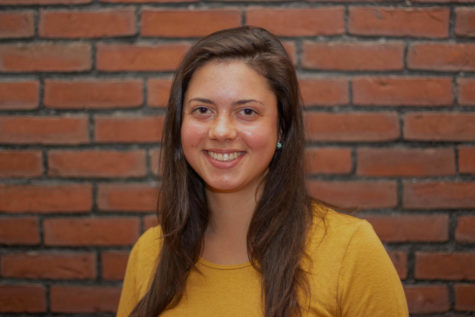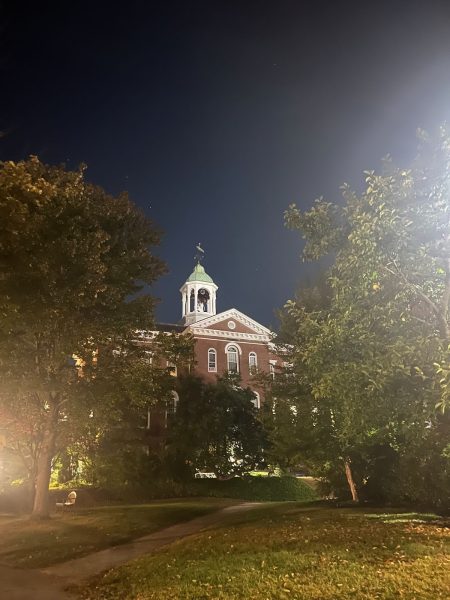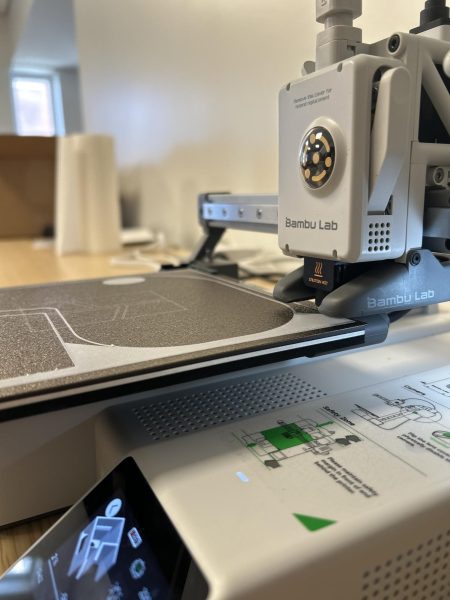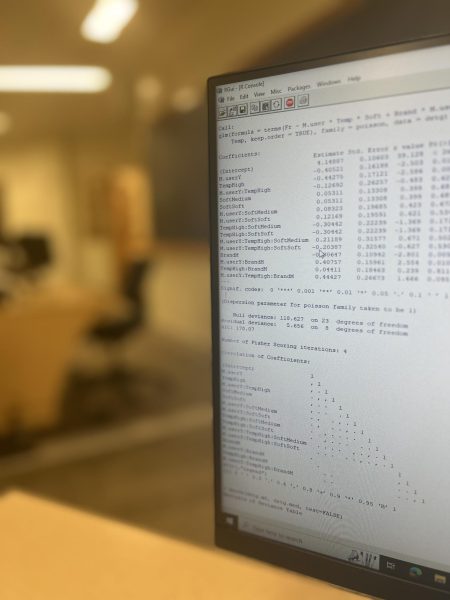Communications and Admissions Seek Feedback During MLK Day Workshop
During Bates’ 2021 MLK Day observance on Jan. 18, over 70 students, administrators, alumni, faculty, and staff gathered for “Between the Lines: Communications & the Predominantly White Institution in 2021,” a workshop held by the Bates Office of Communications (BOC) and the Office of Admissions.
The focus of the workshop was to examine the efficacy and the ethicality of the college’s marketing practice, with an emphasis on discussing the college’s so-called abolitionist origin story, a fitting subject for this year’s theme: “Confronting Our History: Justice for Coming Times.”
A Participant-Centered Workshop
While many of the other MLK Day workshops featured guest speakers and panelists to educate participants, the goal of this particular workshop was to seek participants’ feedback on the college’s approach to marketing and communication. Questions for participants included, “What goes into marketing and communicating about a college like Bates?” and “How does it intersect with racism and anti-racism on campus?”
The workshop was led by Grace Kendall, director of design services for the BOC. The communications office began planning this MLK Day workshop about a year ago. However, Kendall shared with The Student that there was not a “formal proposal until late last summer, following protests across the country and here in Lewiston in response to the murder of George Floyd.”
The feedback-oriented workshop made it evident that a recent protest closer to home was also a contributing factor in the planning.
“The student protest was definitely on our minds as we finalized what format the workshop would take,” Kendall said, referencing the student-led protest that took place on Oct. 30. “We wanted to ensure plenty of opportunity for discussion, and we wanted to create situations where people, particularly students, would feel comfortable talking and sharing their ideas.”
Kendall began the workshop with a brief introduction and a moment of silence to ground both facilitators and participants. The facilitators included Senior Associate Dean of Admissions Liz McGonigle, Web Designer Oliva Orr, Director of Photography Phylis Graber Jensen, Senior Associate Dean of Admissions Johie Seltzer, Editorial Director and Bates Magazine Editor, Jay Burns, and Assistant to the Chief Communications Officer and Office Coordinator Kristen Burns.
The BOC consists of 11 employees and is responsible for generating marketing material for the college and for Admissions, providing news coverage and fundraising material, and developing the commencement program.
McGonigle shared that the Office of Admissions is responsible for recruiting a diverse and talented student body, organizing tours and open houses, and supporting and stewarding these students throughout their college career.
During the introductions, it was clear that admissions has a broad understanding of diversity. Socio-economic class, geography, ethnicity, race, secondary school, and other factors all weigh into the admission process.
Participants Polled on the Impact of Bates Communications Material
To begin the conversation, a poll was sent out to all participants as a base for discussion topics. Once the results of the poll were shared with the entire group, participants were sent to breakout rooms for small group discussions followed by a full group share-out and Q&A.
“We wanted to ensure plenty of opportunity for discussion, and we wanted to create situations where people, particularly students, would feel comfortable talking and sharing their ideas,” Kendall said.
The following questions were included in the poll, and were used as a basis for the discussion:
- Student, staff member, faculty or other?
- Would you feel comfortable seeing yourself in Bates marketing material?
- Do you feel like the college’s social media channels reflect your experience at Bates?
- Does your experience as a student or employee match up with what your perception of Bates was when you were first applying here as a prospective student/ employee?
- Did the Bates origin story, as you heard it at the time, influence your decision to join Bates as a student or employee?
The majority of participants appeared to be white and were disproportionately faculty or staff members. Due to this demographic, the results of the poll were not an accurate data set to reflect the wider campus population. However, the questions above served as a helpful conversation starter in the breakout rooms.
Participant Feedback & Suggestions
Associate Professor of Rhetoric, Film, and Screen Studies Stephanie Kelley-Romano was one of the faculty members in attendance. Amongst other courses, Kelley-Romano teaches “What is Rhetoric?” The course allows students to consider the rhetoric that Bates produces –– and the rhetorical construction of a community –– by analyzing advancement materials, acceptance and rejection letters, and publications materials for prospective students, alumni, donors, and parents.
In a conversation with The Student, Kelley-Romano shared that it’s important to find a balance between representational and aspirational materials created by the institution.
Associate Professor of History Joe Hall also attended the workshop and has worked with students to tell a more accurate Bates origin story. In reflecting on the role of the BOC at a predominantly white institution (PWI), Hall posed the question, “How do Bates faculty and administration relinquish control of the management of the message of what Bates College is?”
Feedback that participants shared with the entire group included the following suggestions:
- Recruit student photographers to work with the BOC and involve students earlier on in key decision-making processes.
- Host more conversations that are open to a variety of members and stakeholders across the Bates community.
- Discuss challenges that arise in terms of systemic issues, rather than as isolated events, that arise from structural racism and white supremacy at a PWI.
- Tell a more accurate story and increase transparency, including telling a more accurate version of Bates’ origin story and representing the lived experience of BIPOC and international students on campus.
- Center narratives that actively dismantle white supremacy rather than trying to sell Bates as something that it is not.
- Pursue cross-departmental partnerships to further this work.
When asked about the most significant piece of feedback received from this workshop, Kendall replied that it was “heartening to hear that students are (and have been) craving deeper honesty about the college’s founding story and ongoing need for antiracism work here at Bates.” She also noted that prospective students desired this same transparency and would like to hear about the college’s ongoing antiracism work rather than a “glossy sales pitch.”
Communications and Admissions Acknowledge there is still Work to be Done
McGonigle concluded the meeting by saying, “This is just the beginning of the work we’re doing.” She also briefly acknowledged last October’s protest and said that both the BOC and Office of Admissions are getting better at dealing with and responding to criticism, while also working on “giving dissenting voices more weight.”
The workshop has given “a clear path forward to build those principles into our work,” Kendall told The Student, “both as a communications office and in our partnership with admissions.”
Participants of at least two separate break out sessions shared that they felt comfortable seeing themselves in Bates marketing material, but that other students, particularly BIPOC students, may not share this same comfort. The participants further explained that photos showing campus diversity is not enough and that there needs to be action in support of that diversity.
In June, President Clayton Spencer released an action plan for antiracism work at Bates that included the construction of racial equity plans for each department. The BOC has since finalized their plan while also acknowledging that this plan will continue to be revised and updated. “We have taken many steps to put the plan into action,” Kendall said.
Some of these steps include pursuing review processes with the Office of Equity and Inclusion for key publications, taking steps to formalize paid student involvement in their equity and overall communications work, and creating office-wide hiring practices that are grounded in equity and inclusion. “The plan should and will touch every part of our work,” Kendall added.
The BOC has also considered sending out a survey, similar to the poll given in the workshop, in order to obtain feedback that is more representative of the campus community. This campus-wide survey would be facilitated by the Office of Institutional Research, Analysis & Planning, and the BOC has reached out to them about the possibility. In the meantime, a followup survey will be sent to the workshop attendees within the next couple weeks.
As the BOC and admissions continue their conversation on anti-racism practices at Bates and begin to implement appropriate changes, it remains to be seen how other offices and departments on campus will address these same issues in their work.
Amelia Keleher and Elizabeth LaCroix both attended and participated in the workshop
Your donation will support the student journalists of Bates College and help us cover our annual website hosting costs.

Amelia Keleher ('21) is an American Studies major interested in sustainable and equitable food systems. She grew up in Corrales, New Mexico and Amersfoort, The...

Elizabeth is a member of the class of 2023 and is from Richmond, Rhode Island. She is a double major in English and chemistry and is also a member of...






